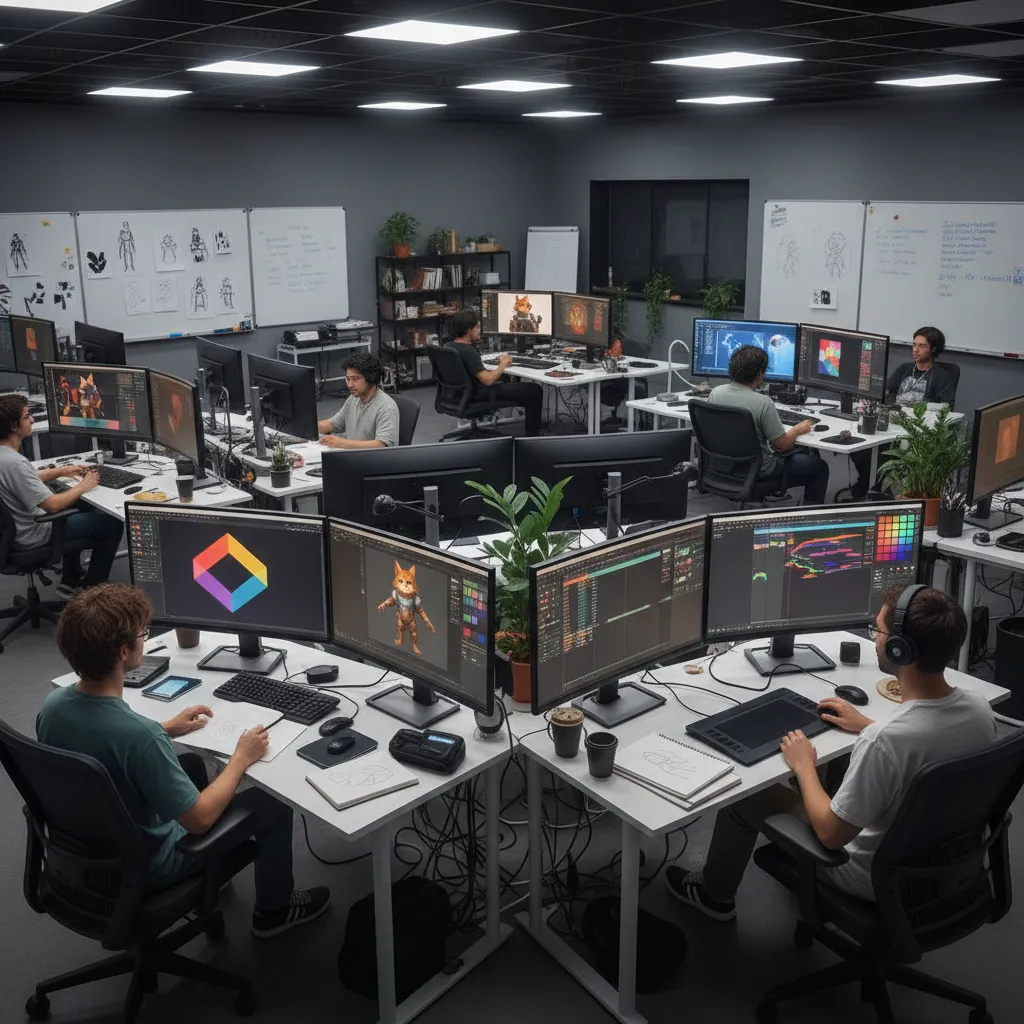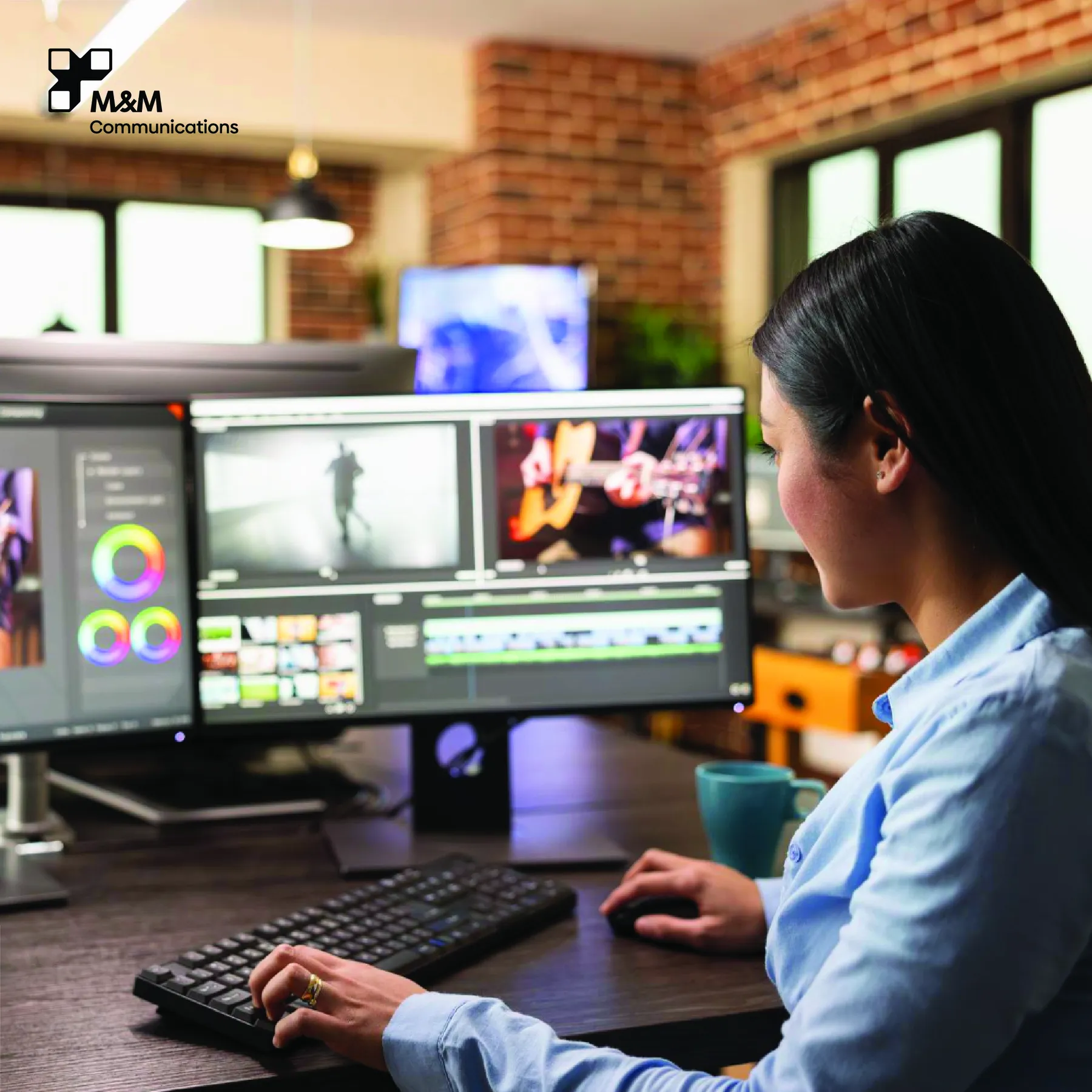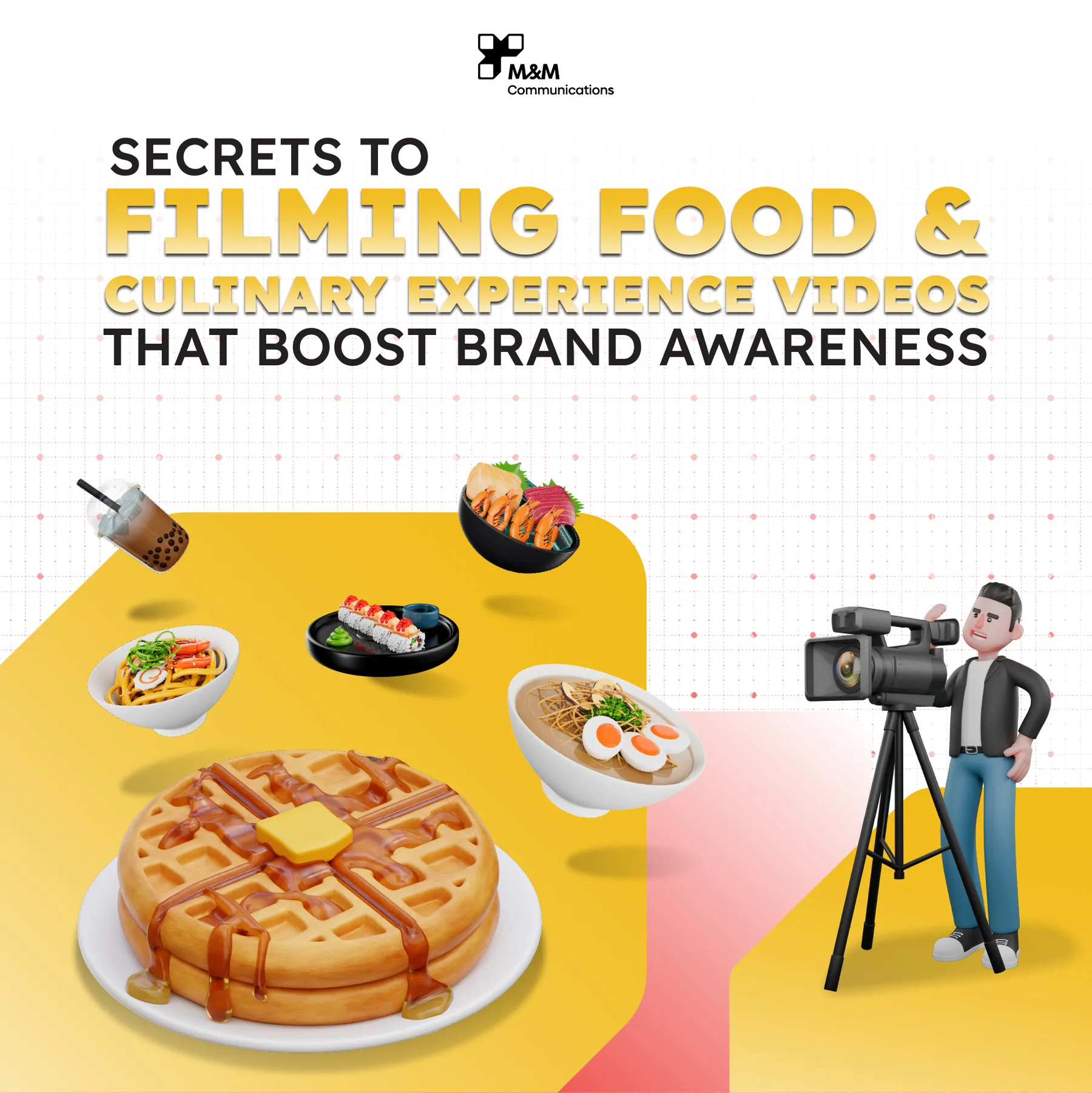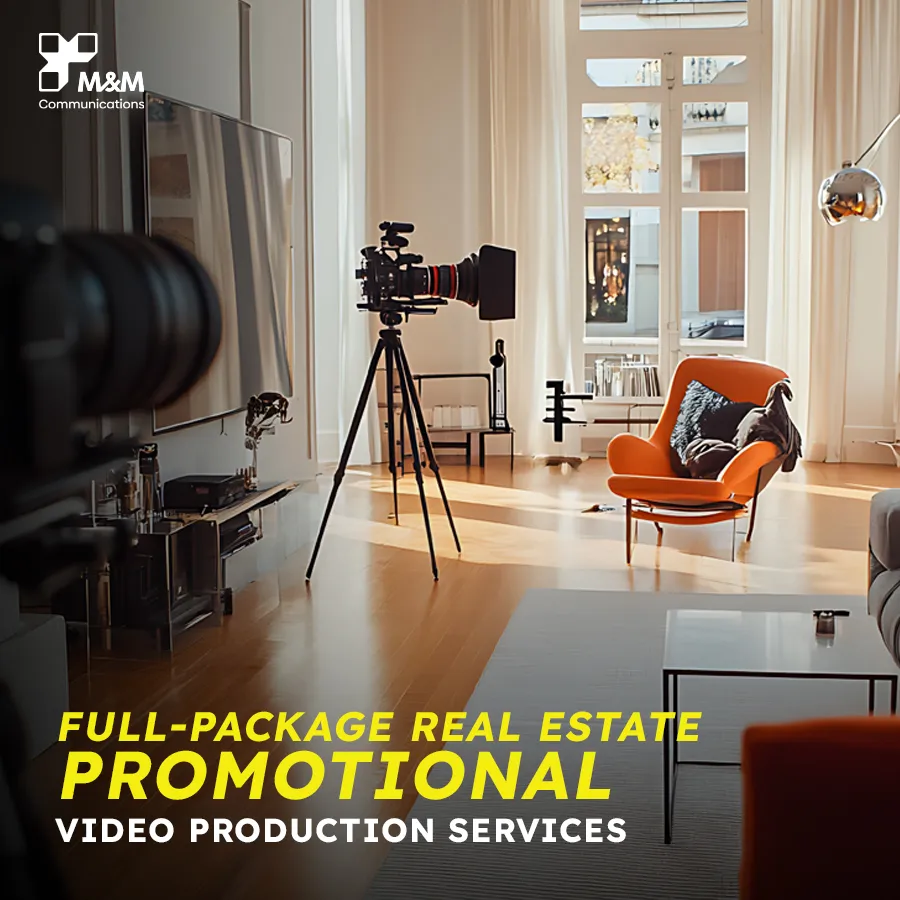
Video Animation Marketing: Professional Motion Graphics Techniques That Drive Results
The Power of Animation in Modern Marketing
Animation has evolved from simple moving graphics to sophisticated storytelling tools that capture attention, explain complex concepts, and create memorable brand experiences. At M&M Communications, we've leveraged animation for brands across industries, understanding that successful animated marketing isn't just about impressive visuals—it's about creating inspirational and magical stories that connect emotionally with audiences.
Understanding Animation's Unique Marketing Advantages
Animation offers unparalleled creative freedom, allowing brands to visualize abstract concepts, showcase impossible scenarios, and create consistent brand characters that become memorable marketing assets. Unlike live-action video, animation transcends physical limitations, enabling brands to tell stories that would be impossible or prohibitively expensive to film.
The flexibility of animation makes it particularly valuable for explaining complex services or products. Software companies can demonstrate user interfaces, manufacturing companies can show internal processes, and service providers can visualize intangible benefits through engaging animated narratives.
Types of Marketing Animation: Choosing the Right Style
2D Motion Graphics Animation
2D animation remains the most versatile and cost-effective option for most marketing applications. It encompasses everything from simple logo animations to complex character-driven narratives. The style can range from minimal and clean for tech companies to vibrant and playful for consumer brands.
Key advantages include faster production times, lower costs compared to 3D animation, easier revisions, and broad appeal across different demographics. 2D animation works exceptionally well for explainer videos, social media content, and educational materials.
3D Animation and Modeling
3D animation provides photorealistic representations and immersive experiences that can showcase products from every angle. This style works particularly well for automotive, real estate, and luxury goods marketing where visual detail and realism enhance perceived value.
While 3D animation requires higher budgets and longer production timelines, the results can be stunning and highly shareable. Consider 3D animation when you need to demonstrate product functionality, create virtual tours, or develop premium brand experiences.
Motion Graphics and Kinetic Typography
Motion graphics combine text, shapes, and visual elements to create dynamic presentations perfect for data visualization, statistics presentation, and brand storytelling. This style excels at making complex information digestible and engaging.
Kinetic typography transforms written content into dynamic visual experiences, making text-heavy information more engaging and memorable. This technique works excellently for quote animations, testimonial presentations, and educational content.
Professional Animation Production Tools
Industry-Standard Software
Adobe After Effects remains the gold standard for motion graphics and 2D animation. Its extensive plugin ecosystem, integration with other Adobe products, and powerful compositing capabilities make it essential for professional animation production.
Cinema 4D leads 3D animation for motion graphics applications, offering intuitive interfaces and robust motion graphics tools. It integrates seamlessly with After Effects for complex projects combining 2D and 3D elements.
Blender provides free, open-source 3D animation capabilities rivaling expensive commercial software. Its growing popularity makes it an excellent choice for budget-conscious productions without compromising quality.
Specialized Animation Tools
Character Animator enables real-time character animation using webcam and microphone input, perfect for creating engaging spokesperson characters or interactive presentations.
Lottie animations allow seamless integration of high-quality animations into websites and mobile applications while maintaining small file sizes and crisp quality across all devices.
Storytelling Through Animation
Visual Narrative Structure
Effective animated marketing follows proven storytelling structures adapted for visual mediums. The classic problem-solution narrative works particularly well, where animation demonstrates challenges faced by target customers, then showcases how your product or service provides solutions.
Character-driven narratives create emotional connections by following relatable protagonists through transformation journeys. This approach works excellently for service-based businesses, educational content, and brand awareness campaigns.
Color Psychology in Animation
Color choices dramatically impact viewer emotions and brand perception. Warm colors (reds, oranges, yellows) create energy and urgency, while cool colors (blues, greens, purples) convey trust and professionalism. Consistent color palettes throughout animated content reinforce brand recognition and emotional associations.
Consider cultural color associations, particularly when creating content for Vietnamese markets where red symbolizes luck and prosperity, while white might represent mourning in certain contexts.
Pacing and Timing
Animation timing affects viewer engagement and information retention. Quick cuts and rapid movements create excitement and energy, while slower, more deliberate movements convey elegance and sophistication.
Follow the 3-second rule for social media animations—capture attention within the first three seconds, or viewers will likely scroll past. For longer-form content, vary pacing to maintain interest throughout the entire duration.
Animation for Explainer Videos
Breaking Down Complex Concepts
Explainer animations excel at simplifying complicated ideas through visual metaphors and step-by-step demonstrations. Use familiar objects and scenarios to represent abstract concepts, making complex services or products immediately understandable.
Structure explainer animations around the viewer's perspective: What problem do they face? How does your solution work? What specific benefits will they experience? This customer-centric approach ensures maximum relevance and engagement.
Educational Animation Techniques
Educational animations should progress logically from simple to complex concepts, using visual building blocks that reinforce learning. Repeat key visual elements to strengthen memory retention and provide clear visual hierarchies that guide viewer attention.
Include pauses and transitions that allow viewers to process information before introducing new concepts. This pacing consideration becomes particularly important for technical or detailed subject matter.
Brand Integration in Animated Content
Consistent Visual Identity
Successful branded animation seamlessly integrates logo, colors, typography, and visual style without feeling overly promotional. The brand should feel like a natural part of the story rather than an obvious advertisement.
Develop animated brand assets—logo animations, character designs, and visual elements—that can be reused across multiple projects, creating consistency while reducing production costs for future animations.
Subtle Brand Messaging
The most effective animated marketing focuses on customer benefits and emotional resonance rather than overt product promotion. Let the story demonstrate value naturally rather than explicitly stating product features.
This approach aligns perfectly with M&M Communications' philosophy: we don't try to persuade customers to buy through aggressive tactics. Instead, we create content that emphasizes their positive experiences, building lasting emotional connections.
Social Media Animation Optimization
Platform-Specific Requirements
Different social platforms favor different animation styles and formats. Instagram prefers square or vertical animations under 60 seconds, TikTok thrives on vertical content with trending audio, and LinkedIn responds well to professional, informative animations.
Create platform-specific versions rather than using identical content across all channels. This approach maximizes engagement while respecting each platform's unique audience expectations and algorithmic preferences.
Mobile-First Animation Design
Most social media consumption happens on mobile devices, requiring animations optimized for small screens. Use bold, clear graphics that remain visible on phone displays, ensure text is large enough to read comfortably, and design for silent viewing with effective visual storytelling.
Animation Production Workflow
Pre-Production Planning
Successful animation projects begin with detailed storyboards and animatics that visualize timing, transitions, and key moments before production begins. This planning stage prevents costly revisions and ensures all stakeholders share the same creative vision.
Create style frames that establish visual direction, color palettes, and overall aesthetic before beginning animation work. These reference frames guide the entire production process and facilitate client approval.
Production Management
Animation production involves multiple stages: design, animation, sound design, and post-production. Establish clear milestone approvals to prevent late-stage changes that can significantly impact timelines and budgets.
Maintain organized project files and version control systems, particularly important for collaborative animation projects involving multiple team members or client reviews.
Measuring Animation Performance
Engagement Metrics
Track view completion rates, engagement actions (likes, shares, comments), and click-through rates for animated content. Animation typically achieves higher engagement rates than static content, making these metrics particularly valuable for ROI calculation.
Brand Impact Assessment
Measure brand awareness improvements, message recall, and purchase intent changes following animated marketing campaigns. Use surveys and analytics to understand how animation affects overall brand perception and customer behavior.
Future Trends in Animation Marketing
Interactive Animations
Interactive animations that respond to user input create engaging experiences that transform passive viewing into active participation. These experiences work particularly well for product demonstrations and educational content.
AI-Assisted Animation
Artificial intelligence tools are beginning to automate certain animation tasks, reducing production time and costs while enabling more personalized animated content at scale.
Conclusion: Animating Your Brand's Future
Animation marketing offers unique opportunities to create memorable, engaging content that cuts through digital noise and connects emotionally with audiences. Success requires strategic planning, creative storytelling, and technical expertise to produce animations that not only look professional but also drive measurable business results.
At M&M Communications, we understand that the best animated marketing doesn't just showcase products—it creates inspirational and magical stories that help audiences envision their lives improved through your brand. Through careful planning, creative execution, and strategic optimization, animation becomes a powerful tool for building lasting customer relationships and driving sustainable business growth.
The future belongs to brands that can tell compelling stories through motion. Start exploring animation's potential for your marketing strategy today, and discover how this versatile medium can transform your brand communications and customer engagement.






